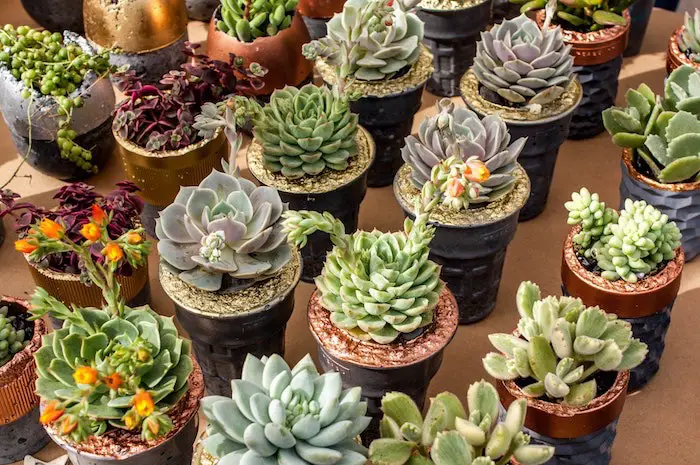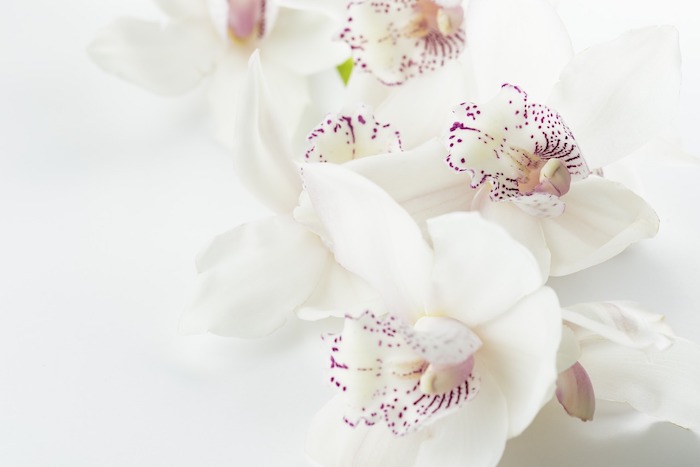Adding attractive green vegetation in your living space not only enhances the décor but also has a positive impact on your overall health. Of the various easy to grow indoor plants, succulents stand tall for being able to adapt in different environments with modest requirements.
These humble pastel-colored plants with bold textures have gain immense popularity for their versatility, low-maintenance, and attractive forms. From effervescent rosettes and aloe with medicinal benefits to the lovely jade plants, succulents have stepped beyond being a decorative flora.
Although succulents are touted as one of the easiest plants that can grow in any environment and bear some neglect too, some beginners have a hard time growing them. If you see your succulents becoming brown or getting dried out, then there might a few things you have missed out from the rule book.
In this post, we will discuss some of the essential tips to keep succulents alive and thriving in every season, both indoors and outdoors. We will also tell you about some of the easiest to grow succulents ideal for the beginners. So, let’s get started.
Tips To Keep Succulents Alive And Thriving
#1. Allow Them The Space To Breathe
Some varieties like kalanchoe and aloe thrive well indoors, while most of the other breeds come from the warm and arid climates, requiring good air circulation. So, even if you feel tempted to grow succulent terrarium indoors, they will not live well in a closed environment. They will thrive better when exposed to outdoor elements.
Many people love layering their succulents for an eye-catching arrangement like a bouquet of rose, but this does not provide an ideal environment for the plants to grow. Make sure the plants get enough fresh air to breathe and absorb the sunlight.
#2. Grow In A Shaded Place
There’s a common misconception that succulents need optimum sun exposure and the hottest temps in order to thrive, however, this is not true. While they do appreciate a lot of light, most varieties of succulents require sun protection in two conditions.
First when the plants are very small and secondly when the temperature reaches the 90-degree-mark. In both these conditions, the solid green or pale succulents are at risk of sunburn. Indicators are brown edges, wrinkled petals, and so on.
Tip – If you wish to grow succulents outdoors and blast them with the highest sun temperature, we suggest that you get the blue, gray, or red varieties, or the plants that are covered with spines to reflect the sun rays.
#3. Start With The Right Soil
You will need to use the right type of soil that provides the perfect environment for growth. We suggest a fast-draining cactus soil mix for optimum growth. You may make adjustments to the traditional potting soil by mixing it with crushed lava, coarse perlite, or pumice. The ideal type of soil includes one part amendment and four parts of potting soil mix.
#4. Less Water Is Not The Same As No-Water
It’s true that succulents thrive in an arid environment and do not want too much water. However, you must not confuse between less water and no water at all. While they prefer drier soil, they do need some water to stay alive, or else they will die.
Ideally, we would suggest that you water the plants when the soil starts looking and feeling dry. You can water small pots once a week and large pots in every two weeks. Remember that under watering is also harmful to your plant as overwatering, so it’s essential to strike the right balance.
#5. Water More Or Less As Season Changes
Just like humans, plants are also living and their water intake varies according to the season. Succulents need more energy when they are in a growing period. In summer and springs, the plants thrive and drink more water than winter and fall when they are in a resting phase.
Experts suggest that you do a quick finger test to determine whether or not your plant needs water. If the top 1.25 inches feel dry if you stick your finger in the soil, you need to water. If not, let the soil dry before you water again.
#6. Water Directly To The Soil
You need to water succulents less than other plants, but when you do, you must ensure that you soak the soil properly until water runs out of the drainage holes. If you have indoor plants in pots with no drainage, water less but directly so that it evaporates soon.
We don’t advise using a spray bottle to sprinkle water on the succulents, as frequent misting may cause moldy leaves and brittle roots. Another way to humidify the soil is to keep the pot in a pan filled with water so that the soil absorbs moisture.
#7. Let There Be A Drainage System
If you plant them outdoors, make sure the pots have a good drainage system because succulent roots do not have an affinity for water. Even if you water the plants weekly, you must ensure that the water drains out quickly without staying clogged and rotting the root.
This is slightly tricky in the case of indoor plants. Many people love to use succulents as a centerpiece in the living room and the pots may have no drainage. For plants like these, you have to be really careful when watering them.
#8. They Need Food And Nutrition
While it’s a fact that succulents are capable of growing in low-nutrient soil and don’t require much for thriving, but still food is essential. You must feed it with a half dose of a well-balanced organic fertilizer at least once a year, preferably at the beginning of the growing season.
#9. Give Propagation A Second Thought
You may have the habit of plucking a stem from your favorite houseplant and putting it in water to see the roots grow, however this method does not work for the succulents. In this case, you are required to do just the opposite in order to get successful results.
When you have a plant that you really like and would like to propagate, we suggest that you pluck a stem and let it dry in the shade for 3 days. This is the healing process that prevents a plant from getting rotten. Plant this stem in potting soil mix and you should be good to go.
#10. Frost Bites Protection
There are a few varieties of succulents such as Sempervivum and Sedum that can withstand really freezing conditions, but most of them cannot. So, be careful when the weather forecast says there’s going to be a cold snap and take measures to protect your outdoor plants.
As succulents are mostly filled with water in their cells, they are prone to bursting, damaging the leaves. Any drop in temperature below the freezing point can be detrimental to the health of your plants. If you live in an area that gets very cold, we suggest that you plant succulents in light containers to easily move indoors when needed.
#11. Get The Right Plant
We know the temptations of trying to have the most attractive and attention-seeking houseplant in our living area. However, please get it straight that an orange tree cannot thrive in Alaska no matter how much you like it. Some varieties are doomed to die the moment you bring them home because they are a bad fit for your surroundings.
It’s all about planting the right plant at the right place. We suggest that you ask your local garden for a plant that will stay alive in your indoor or outdoor environment. For example, if you find it hard to remember to water your plants, look for a variety that needs very little care. If you have pets at home, look for plants that are safe to keep indoors.
#12. Remember to Rotate the Succulents

There are some varieties of succulents that love the direct sun but even then you must remember to rotate them occasionally. If the plants sit in the same spot all the time, only one side of the plant gets overexposed to the sun’s rays and over time, you will see the plant leaning to that side.
We recommend that you rotate the plant in order to ensure that it stays upright. If your plants are leaning, it may also indicate that they need to be placed in a sunnier spot.
#13. Keep The Succulents Clean
Whether you keep the succulents indoors or outdoors, they will inevitably get dust on the surface, and this can be an obstacle for their growth. The dust and debris tend to clog the leave’s pores, making it difficult for them to breathe.
We suggest that you wipe off the spines and leaves frequently using a soft damp cloth. You may use a paintbrush to dust off the hard to reach areas. This will help you succulents stay alive longer.
#14. Fertilize in the Summer
Although these plants do not need a lot of fertilizer in order to thrive, they need some in their growth phase that extends between spring and summer. However, you must be careful to feed only the required amount of fertilizer (see Amazon) depending upon the breed and size of the plant. Overfeeding may cause the plants to grow very quickly but become weak.
#15. Humidity and Temperature
In the growing regions of the Southeastern states, succulents face two main growth challenges in the form of high temperatures and humidity. However, the succulents are known to be highly forgiving plants. Even though they prefer a drier environment, the plants can thrive well in high humidity.
When growing indoors, ideally you must try to maintain the temperature ranging from 50 to 80 degrees Fahrenheit. As the succulent leaves have the tendency to store water in their leaves, they appear so thick and fleshy
#16. Proper Potting Mix
When cultivating succulents, we strongly suggest that you use well-drained soil instead of sand. These plants use specially formulated potting mix, so ask for the suitable mixes for cacti and succulents in your local garden store.
We also suggest using an unglazed pot as it can pull away excess moisture from the root. Another trick is to keep a layer of gravel between the pot and saucer to help with any overflow.
#17. Overwintering Care
As winter approaches, your indoor succulent plants might need some special care and it’s mostly about lighting. Many varieties stay dormant during winter and require less water, while there are others that grow during this time of the year.
To take better care of the plants, make sure you know their names so that you can research what they need. If you are unsure of the plant name (if it’s a gift from someone), stop feeding and also reduce watering. Look at the color of the leaves to determine whether they need more or less water and light. If they look pale, they might need more light.
#18. Invest In Grow Lights
When you are passionate about your succulents and want them to thrive indoors in winter, we suggest that you invest in good quality grow lights. You may get the setups that come with grow lights already installed in them.
Experts suggest that you must provide at least 14 to 16 hours of light to succulent plants during winter to keep them alive. For the right winter care, we suggest that you keep your plants in a bright area that gets good air circulation.
#19. Keep Bugs Away
Pests and bugs are usually not a problem for the indoor succulent plants, but you may occasionally have to deal with bugs such as Gnats. They get attracted to succulents that are soggy and wet, without proper drainage. We suggest that you spray the potting soil with 70% isopropyl alcohol to get rid of larvae and eggs.
Besides gnats, mealybugs are the other type of pests that succulent growers have to deal with. Some of the common causes of mealybugs are overfertilizing and overwatering. As a preventive measure, move the infected plant away from other succulents and spray with 70% isopropyl alcohol.
5 Best Succulents To Grow Indoors
They make great indoor plants if you choose the right variety. If you are a beginner wanting to add green vegetation in your living room, patio or even kitchen, here are some of the top picks.
Gasteraloe ‘Flow’
This slow-growing succulent variety features sturdy and textured green leaves with small bumps. They are capable of surviving in low-light environments and also tolerate neglect.
Haworthia planifolia
This is a gorgeous prolific succulent plant that features green and juicy leaves that arrange to form a bright rosette. It grows new offsets around the base, and soon develops into a clump. These translucent plants thrive well in low light conditions.
Graptoveria ‘Bashful’
If you are looking for succulents that you can grow in window sills, check out this interesting variety. These sun-loving plants have long and upright leaves that may look green or deep scarlet depending upon the sun exposure. They grow wide but stay stemless without the need for pruning.
Blue Pickle Vine
If you like to adorn your home with trailing succulents, we suggest this plant with slender and string-like stems that can quickly grow more than 3.0 inches long. The blue-green leaves are shaped like sickle and tolerate low light conditions. They like to be watered more frequently.
Panda Plant

Also known as Kalanchoe tomentosa, these plants come with a thick velvety coating and they are easily adaptable to a wide range of light and water conditions. They are often called easy fuzzy succulents because they are easy to grow and the leaves have soft hairs on the surface.
Related Questions
Can succulents grow in sand?
You probably related succulents with cactus and believe that they thrive well in the sand. While this is true, these plants actually prefer loose and rocky soil for the nutrients to get absorbed properly. If you use only sand to grow the plants, they may get compact over time and result in too much water retention in the container.
We suggest that you always get the best potting medium that is specially formulated for succulents and cacti. Alternatively, you may use a well-draining mix of coarse sand, potting soil, and pumice.
Is it possible to grow succulents from seeds?
Yes, succulent plants can be grown indoors from the seeds. They will require moist soil and light, however the growth is typically slow and the plants do not reach the transplant size until the next six months to a year after the germination.
Why are the leaves falling?
Similar to the other plants, the leaves on the lowest part of the stem will shrivel up and fall down eventually. There is nothing to worry about if the leaves fall in this manner. However, if the topmost leaves are drying or falling off then this may indicate pests, disease, or overwatering.
Are there any pet-safe varieties
As a responsible pet owner, you should ensure that the succulents are not toxic for your furry friends. There are five types of pet-safe succulent varieties you can cultivate and they are Echeveria, Hardy Sedum, Haworthia, Sempervivum, and Tender Sedum.
What type of growing lights can you use for indoor succulents?
If you want to keep your indoor succulents alive by giving them enough light they need, we suggest that you use compatible growing lights like Fluorescent Grow Lights, High-Intensity Discharge (HID), and Light-Emitting Diodes (LEDs). To start with, we suggest that you keep lights on for 12 hours and off them for the next 12 hours. This should be enough for photosynthesis.


